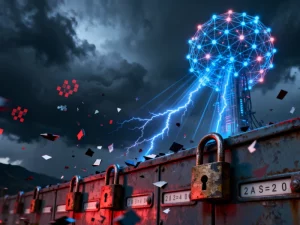Cybersecurity is often framed as a battle: Red Teams attack, Blue Teams defend. But what if the greatest strength doesn’t come from competition, but collaboration? This is where the Purple Team emerges, not as another silo, but as a bridge that unites attackers and defenders. By transforming lessons from simulated attacks into actionable defenses, Purple Teams turn friction into growth. They embody the principle that security is strongest when teams work in collaboration, not when they operate in isolation.
The Philosophy Behind Purple Teaming
Purple Teaming is more than a role; it is a philosophy. Instead of keeping offense and defense separate, it encourages communication and shared objectives. Red Teams may expose vulnerabilities, but without structured feedback, those insights risk being lost. Blue Teams may defend tirelessly, but without visibility into attacker methods, their strategies remain incomplete. Purple Teams change this dynamic. They ensure both sides understand each other, creating a continuous feedback loop where every simulation becomes a catalyst for stronger defenses.
How Purple Teams Work in Practice
In practice, Purple Teams act as facilitators. They do not compete with Red or Blue but align them toward common goals. When Red uncovers a weakness, the Purple Team translates it into specific improvements for Blue. When Blue deploys a new detection system, the Purple Team validates its effectiveness by leveraging Red Team insights. The result is not just discovery, but measurable improvement. By serving as the connective tissue, Purple Teams guarantee that every exercise strengthens defenses rather than simply showcasing gaps.
Core Functions of a Purple Team
By weaving together, the strengths of both Red and Blue, Purple Teams create a cycle of constant learning and adaptation. To see their value, it’s worth exploring what Purple Teams actually do. Their role spans multiple functions that drive collaboration and maturity:
- Training Defenders with Attacker Insights → Educating Blue Teams on the latest adversary tactics, techniques, and procedures.
- Validating Detection & Response → Testing whether defenses can identify and respond to simulated attacks.
- Improving Incident Response Playbooks → Helping refine how organizations react when threats strike.
- Measuring Continuous Improvement → Tracking progress over time to ensure that lessons learned translate into stronger resilience.
Strategic Benefits of Purple Teaming
The impact of Purple Teaming extends far beyond technical security. Organizations gain faster maturity because weaknesses are not just discovered but addressed in real time. Resources are used more effectively, as both offensive and defensive teams align their priorities. Purple Teaming also fosters a culture of collaboration, where security is no longer a series of isolated battles but a unified effort. This alignment translates into stronger resilience, clearer reporting for executives, and a more confident response to real-world threats.
Challenges in Purple Teaming
Yet, building a Purple Team is not without challenges. Some organizations mistakenly treat it as a temporary project or assign it as a side responsibility rather than establishing it as a dedicated discipline. Without clear ownership, the role risks becoming diluted. Another challenge is ensuring balance; the Purple Team must mediate without undermining the autonomy of Red or Blue. Success lies in positioning the Purple Team as an enabler, not a replacement, ensuring that collaboration amplifies, rather than overshadows, individual expertise.
In cybersecurity, resilience is not born from rivalry but from partnership. Purple Teams embody this truth, transforming the push and pull of attack and defense into a continuous cycle of growth. By bridging the gap between Red and Blue, they ensure that every exercise strengthens security instead of leaving lessons on the table. For organizations across ASEAN, Terrabyte provides advanced cybersecurity solutions that empower Purple Teams to thrive. With the right strategies and tools, businesses can shift from fragmented defenses to united resilience, ready for whatever threats lie ahead.




